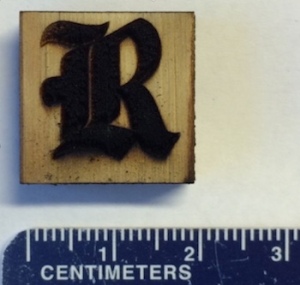Aug 1 2017
Researchers at Rice University have transformed wood into an electrical conductor by changing its surface into highly conductive graphene. The resultant material could be applied to biodegradable electronics.
 This Rice University athletics logo is made of laser-induced graphene on a block of pine. Rice scientists used an industrial laser to heat the wood and turned its surface into highly conductive graphene. The material could be used for biodegradable electronics. (Credit: Tour Group/Rice University)
This Rice University athletics logo is made of laser-induced graphene on a block of pine. Rice scientists used an industrial laser to heat the wood and turned its surface into highly conductive graphene. The material could be used for biodegradable electronics. (Credit: Tour Group/Rice University)
With the help of a laser, Rice Chemist James Tour and his team blackened a thin film pattern onto a chunk of pine which resulted in a laser-induced graphene (LIG) pattern. A form of atom-thin carbon material, LIG was discovered at Rice University in 2014.
It’s a union of the archaic with the newest nanomaterial into a single composite structure.
James Tour, Rice Chemist
The study has been described in Advanced Materials.
In the past, the surface of a polyimide sheet, a low-cost plastic, was heated with a laser to make iterations of LIG.
LIG is not a flat sheet of hexagonal carbon atoms, but a foam of graphene sheets with a single edge fixed to the underneath surface, whilst the chemically active edges were exposed to the air.
Tour informed that LIG cannot be produced by all polyimides and some woods are favored over others.
Headed by Rice Graduate Students Yieu Chyan and Ruquan Ye, the team first experimented with oak and birch, but they observed that cross-linked lignocellulose structure of the pine made it better for producing high-quality graphene when compared to woods that had a lower lignin content. As a complex organic polymer, lignin is responsible for forming rigid cell walls in wood.
Ye stated that the conversion of wood into graphene could pave the way for producing LIG from nonpolyimide materials.
For some applications, such as three-dimensional graphene printing, polyimide may not be an ideal substrate. In addition, wood is abundant and renewable.
Ruquan Ye, Rice Graduate Student
As with polyimide materials, the procedure is carried out by using a standard industrial laser at room pressure and temperature in hydrogen or in an inert argon atmosphere. In the absence of oxygen, the heat produced by the laser does not burn the pine but instead it changes the pine’s surface into wrinkled flakes of graphene foam that adheres to the surface of wood.
When the laser power was changed, the thermal stability and chemical composition of the resulting LIG also changed. At 70% of power, the laser generated the highest quality of what the team called “P-LIG,” where ‘P’ represents “pine.”
The Researchers converted this P-LIG into electrodes for splitting water into oxygen and hydrogen as well as supercapacitors for storing energy, taking their discovery a step further. For the former, layers of nickel and iron or cobalt and phosphorus were deposited onto the P-LIG to make two electrocatalysts with high surface areas that was shown to be both effective and durable.
Tour added that when polyaniline was deposited onto P-LIG, it transformed into an energy-storing supercapacitor that had functional performance metrics.
There are more applications to explore. For example, we could use P-LIG in the integration of solar energy for photosynthesis. We believe this discovery will inspire scientists to think about how we could engineer the natural resources that surround us into better-functioning materials.
Ruquan Ye, Rice Graduate Student
Tour believes that biodegradable electronics could provide a more immediate environmental benefit.
He states, “Graphene is a thin sheet of a naturally occurring mineral, graphite, so we would be sending it back o the ground from which it came along with the wood platform instead of to a landfill full of electronics parts.”
The paper’s Co-authors are Rice Graduate Students Jibo Zhang and Yilun Li; Rice Research Scientist Carter Kittrell; and Xiao Han, who has a complimentary appointment at Rice University and is a Graduate Student at Beihang University, Beijing, China
Tour is the T.T. and W.F. Chao Chair in Chemistry and also a Professor of Computer Science and of Materials Science and Nanoengineering at Rice.
The study was funded by the Air Force Office of Scientific Research Multidisciplinary University Research Initiative and the NSF Nanosystems Engineering Research Center for Nanotechnology-Enabled Water Treatment.